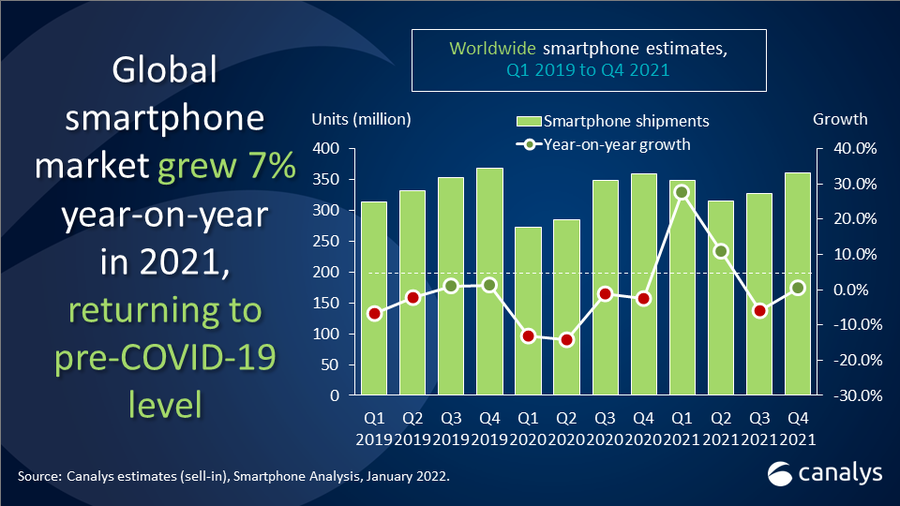2017 marked a significant milestone in the smartphone industry as global smartphone shipments declined for the first time since the modern smartphone era began. According to Mary Meeker’s annual Internet Trends report and IDC’s findings earlier in the year, shipments fell by 0.5%. This came on the heels of lukewarm 2% growth in 2016, indicating that the market may have reached saturation.
Market Saturation and Changing Trends
The decline in shipments highlights how the smartphone market has matured. Android and iOS now dominate the landscape, having almost completely edged out other operating systems. Despite the rising costs of flagship devices, the average selling price of smartphones has steadily fallen as consumers hold onto their devices longer. According to the report, many people are browsing the internet on older devices rather than upgrading to new models.
One key factor driving this trend is that smartphones increasingly look similar, with incremental upgrades rather than revolutionary changes. This lack of differentiation, coupled with a saturated market for second-hand smartphones in good condition, has led to slower replacement cycles.
Smartphone Use and Internet Access
Even with declining shipments, the role of smartphones in everyday life continues to grow. In 2017, people spent an average of 5.9 hours per day on the internet, with much of that time spent on mobile devices. However, internet user growth also slowed, rising by just 7% compared to 12% in 2016.
The “Privacy Paradox”
Meeker’s report also emphasised the growing scrutiny around how tech companies handle user data. As companies rely on data to enhance app experiences, they face increasing pressure to protect privacy. This “privacy paradox” will likely shape the strategies of leading smartphone brands and app developers in the coming years.
Highlights of Smartphones Released in 2017
Premium Smartphones:
- Samsung Galaxy S8 ($1,199): Exynos 8895 Octa-core processor / Snapdragon 835, 4GB RAM, 5.8-inch Super AMOLED Infinity Display, 12MP rear camera, 8MP front camera, Bixby assistant, facial recognition, water resistance.
- Samsung Galaxy S8+ ($1,349): Exynos 8895 Octa-core processor / Snapdragon 835, 4GB RAM, 6.2-inch Super AMOLED Infinity Display, 12MP rear camera, 8MP front camera, Bixby assistant, facial recognition, water resistance.
- Apple iPhone 8 ($1,079): Apple A11 Bionic chip, 2GB RAM, 4.7-inch Retina HD display, 12MP rear camera, 7MP front camera, Wireless charging, glass back design.
- Apple iPhone 8 Plus ($1,229): Apple A11 Bionic chip, 3GB RAM, 5.5-inch Retina HD display, Dual 12MP rear cameras (wide and telephoto), 7MP front camera, Wireless charging, Portrait mode, glass back design.
- LG G6 ($999): Qualcomm Snapdragon 821, 4GB RAM, 5.7-inch IPS LCD with 18:9 aspect ratio and Quad HD+ resolution, Dual 13MP rear cameras (standard and wide-angle), 5MP front camera, Dolby Vision HDR, water resistance.
- HTC U11 ($999): Qualcomm Snapdragon 835, 4GB/6GB RAM, 5.5-inch Super LCD5 with Quad HD resolution, 12MP rear camera with UltraSpeed Autofocus, 16MP front camera, Edge Sense (squeezable frame), BoomSound speakers, water resistance.
- Sony Xperia XZ Premium ($1,199): Qualcomm Snapdragon 835, 4GB RAM, 5.5-inch IPS LCD with 4K HDR resolution, 19MP Motion Eye rear camera with super slow-motion video, 13MP front camera, Water resistance, Predictive Capture.
Mid-Range Smartphones:
- Motorola Moto G5 Plus ($399): Qualcomm Snapdragon 625, 2GB/4GB RAM, 5.2-inch IPS LCD with 1080p resolution, 12MP rear camera with Dual Pixel autofocus, 5MP front camera, Fingerprint sensor, fast charging.
- Samsung Galaxy A5 (2017) ($649): Exynos 7880 Octa-core processor, 3GB RAM, 5.2-inch Super AMOLED with 1080p resolution, 16MP rear camera with f/1.9 aperture, 16MP front camera, Water resistance, fingerprint sensor, Always-on display.
- OPPO R11 ($649): Qualcomm Snapdragon 660, 4GB RAM, 6.0-inch AMOLED with 1080p resolution, Dual 20MP/16MP rear cameras, 20MP front camera, VOOC Flash Charge, slim design.
Budget Smartphones:
- Nokia 3 ($199): MediaTek MT6737, 2GB RAM, 5.0-inch IPS LCD with 720p resolution, 8MP rear camera, 8MP front camera, Stock Android, affordable price.
- Samsung Galaxy J3 (2017) ($279): Exynos 7570 Quad-core processor, 2GB RAM, 5.0-inch Super AMOLED with 720p resolution, 13MP rear camera, 5MP front camera, Removable battery, affordable price.
- Xiaomi Redmi 4X ($179): Qualcomm Snapdragon 435, 2GB/3GB RAM, 5.0-inch IPS LCD with 720p resolution, 13MP rear camera, 5MP front camera, Large battery, affordable price.
While 2017 marked the first year of declining smartphone shipments, the year still showcased impressive innovations from leading brands. With advanced features like facial recognition, wireless charging, and enhanced cameras, flagship devices pushed the boundaries of technology. Meanwhile, mid-range and budget options offered excellent value for money, ensuring there’s something for every consumer. As the industry adapts to slower growth, it will be fascinating to see how brands differentiate themselves and reignite consumer excitement in the years to come.

